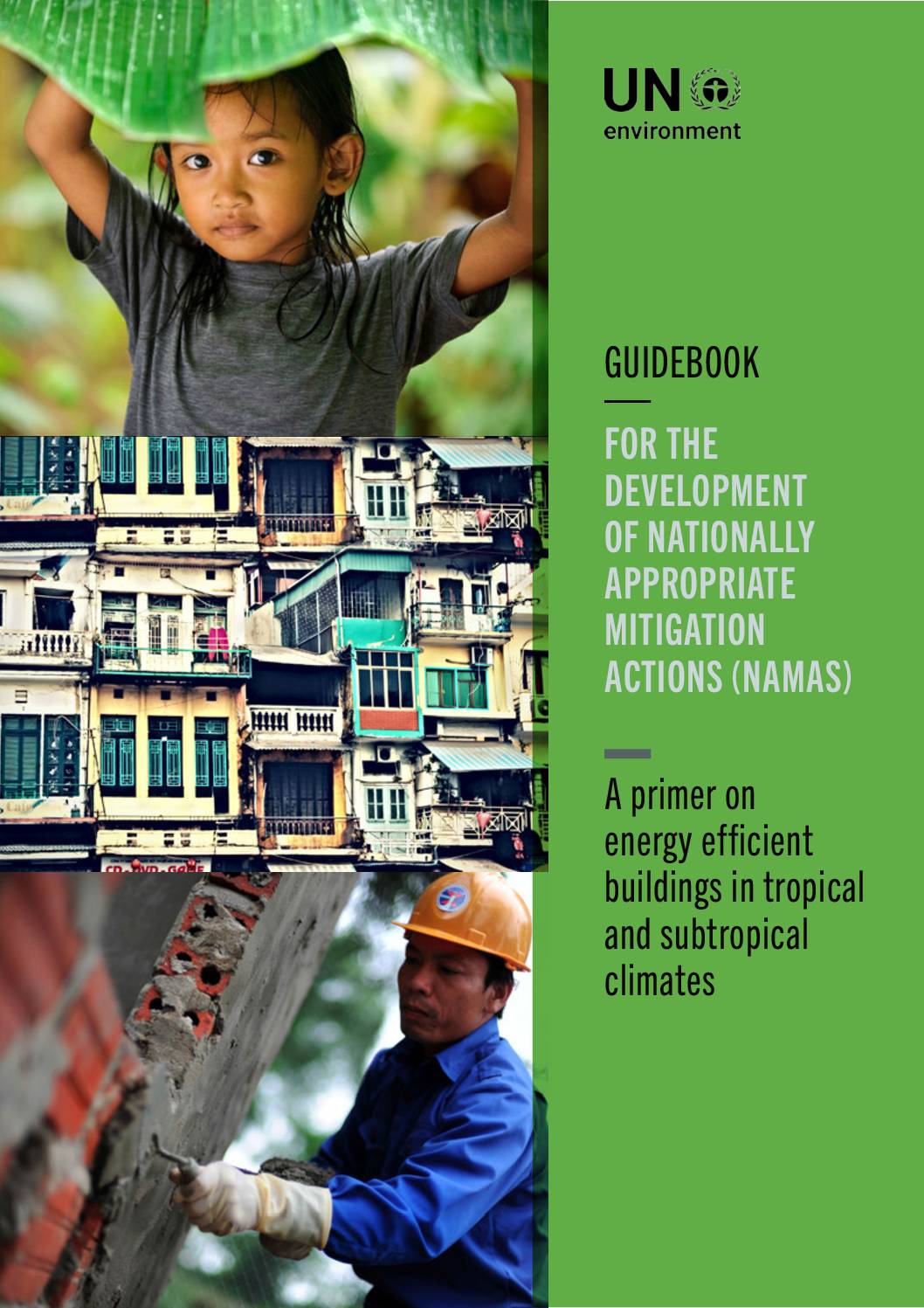This Guidebook aims to be a practical resource for governments (ministries of energy, environment, housing, climate change, finance, planning and others), private sector investors and civil society organizations by illustrating how to create a NAMA for energy efficient buildings based on a country-led national strategy, possibly articulated as a Nationally Determined Contribution. Some countries may already have developed a strategy for energy efficient buildings or may be in the process of developing one, such as Singapore’s Green Mark initiative or Mexico’s NAMA on Sustainable Housing, ‘EcoCasa’. Other countries may have an interest in formulating a NAMA as the concrete implementation model for such an NDC, indicating how the country will turn the NDC into practice. And still others may wish to develop a NAMA without having developed an NDC or a sector-wide strategy first.
No matter the point of departure, articulating a NAMA requires communication with stakeholders, including citizens, the private sector, and national and international financiers. This guidebook is divided into five main sections: an introduction toNAMAs; an Overview of Technologies and Possible Intervention Areas, the Structuring of NAMAs for Energy Efficient Buildings; Measuring, Reporting and Verifying NAMAs; and Financing for NAMAs. The latter four may be regarded as the fundamental building
blocks for NAMA development. Throughout the text the main messages are illustrated by the example of Singapore’s recently introduced policy for energy efficiency improvements in existing buildings.
Chapter 2 gives a generic background for the NAMA concept, origin and founding principles, its relation to NDCs as well as current interpretations among international stakeholders and the UNFCCC Secretariat.
Chapter 3 presents a rudimentary catalogue of relevant technologies for energy efficiency in buildings in tropical climates divided among the five categories identified above as the most prominent sources of consumption. It aims at illustrating the costs and benefits of achievable efficiency gains without aspiring to provide a tool for technology prioritization.
Chapter 4 provides specifics on how to develop a NAMA for energy efficient buildings. The UNFCCC has not yet promulgated strict requirements for NAMAs, but best practices from developed NAMAs as well as donor and investor due diligence requirements provide a basis for identifying the evidence needed to present NAMAs. Specific challenges related to NAMAs for energy efficient buildings are addressed, particularly stakeholder conflicts of interest and rebound effects.
Chapter 5 introduces the measuring, reporting and verifying of the NAMA impacts, including emissions reductions and co-benefits. While basic requirements are given by the decisions of the Conference the Parties, current practices in designing and implementing NAMAs show that accurate interpretation of measuring, reporting and verifying systems adapted to the substance of the NAMA are crucial.
Chapter 6 explains the structuring of the financing for NAMAs, and ways in which NAMAs for energy efficient buildings could be financed. It identifies sources of finance and their different roles in investment finance as well as financing of recurrent spending.
Chapter 7 reviews and summarizes the information contained in this Guidebook, and offers brief advice on what steps to take in order to tap the potential of energy efficient buildings NAMAs.
Share this

Sector: Buildings
Country / Region: Global
Tags: building types, civil society organizations, climate change, corporate reporting, efficient building types, energy, energy efficiency, energy efficient buildings, global climate, implementation, ministries, NAMA, Nationally Determined Contributions, private sector, specific financing mechanisms, stakeholdersIn 1 user collection: C2E2 Publications
Knowledge Object: Publication / Report
Published by: UN Environment
Publishing year: 2017
Author: Søren E. Lutken, Maryna Karavai, Ksenia Petrichenko, Mei Ting Phang, Sudhir Sharma
